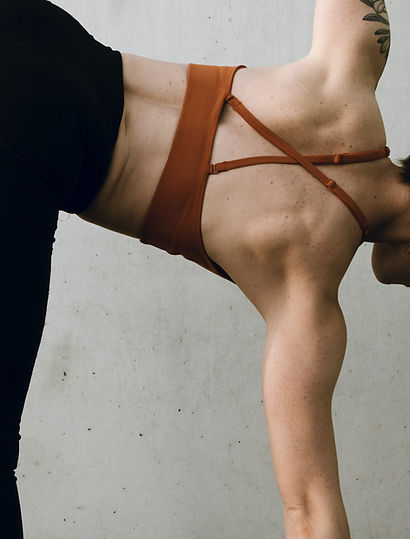
Our Story
AJE is a powerful word rooted in African and Yoruba heritage, symbolizing inner energy, feminine strength, and the force of transformation. In Pilates, this same essence is found in the intentional harmony of breath, control, and movement—unlocking strength from within. AJE reflects the deeper purpose of Pilates: not just to move, but to move with meaning. It’s where motion meets design—a deliberate blend of fluidity and structure, intuition and form. Through this connection, Pilates becomes more than exercise; it becomes a mindful practice that channels the creative force of AJE into every stretch, every breath, and every alignment.
Our Concept
Born from the vision of a French-trained architect, AJE is where design and movement meet. Every curve, line, and space is intentional—just like every exercise we teach. Pilates, like architecture, is about harmony: structure with flow, strength with grace.
In a market of generic workouts, we offer something rarer—a curated, intimate experience where precision meets soul, and where every detail elevates your body, your mind, and your sense of self.

Our Mission
To guide individuals of all backgrounds through transformative pilates experiences that blend precision, self awareness, and spacial intelligence. Within a supportive and inclusive space, we offer curated classes, expert instructors, and a nurturing community — helping our members build a deeper connection with their bodies, minds, and one another.

Our Promise
We promise a refined personal, and purpose-driven approach to movement — where every class is designed with care, every instructor leads with expertise, and every client feels seen supported and inspired.

From Rehabilitation to Global Movement
Pilates was developed in the early 20th century by Joseph Pilates, a German physical trainer who believed that mental and physical health are deeply connected. Born in 1883, Joseph faced illness as a child and became determined to build strength and resilience through movement.During World War I, while interned in a camp in England, he began refining a system of exercises to help injured soldiers regain mobility — using bedsprings and minimal equipment. These early methods laid the foundation for what we now know as the Pilates Reformer. In the 1920s, Joseph moved to New York City, where he and his wife Clara opened a studio near the New York City Ballet. Dancers and athletes were early adopters, drawn to the method’s focus on core strength, alignment, breath control, and functional movement. Originally called “Contrology,” the method later became known as Pilates, honoring its founder. Today, it’s practiced worldwide — from boutique studios like AJE in New Cairo to elite athletic programs and rehabilitation centers.

